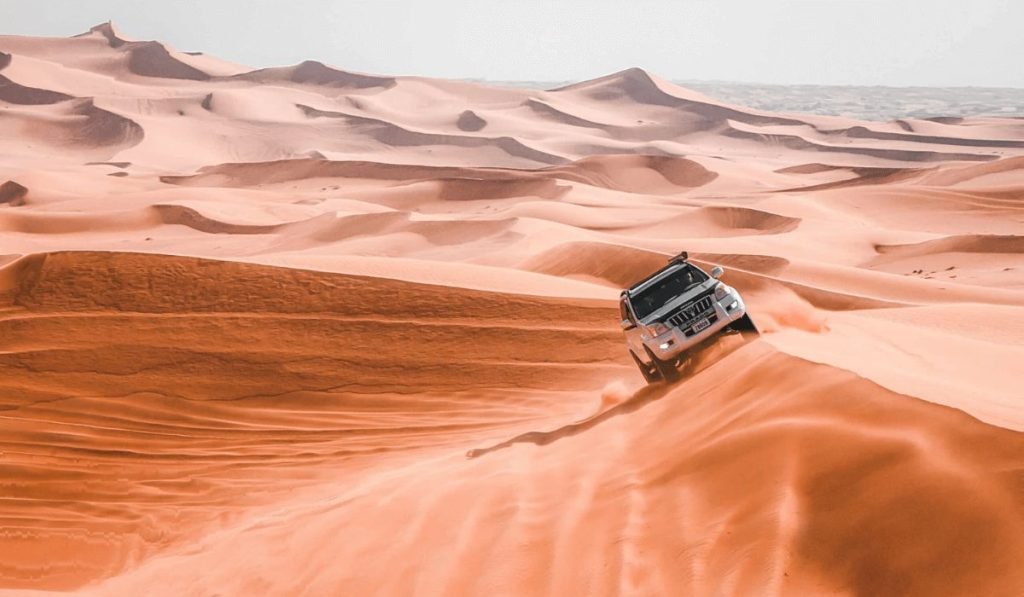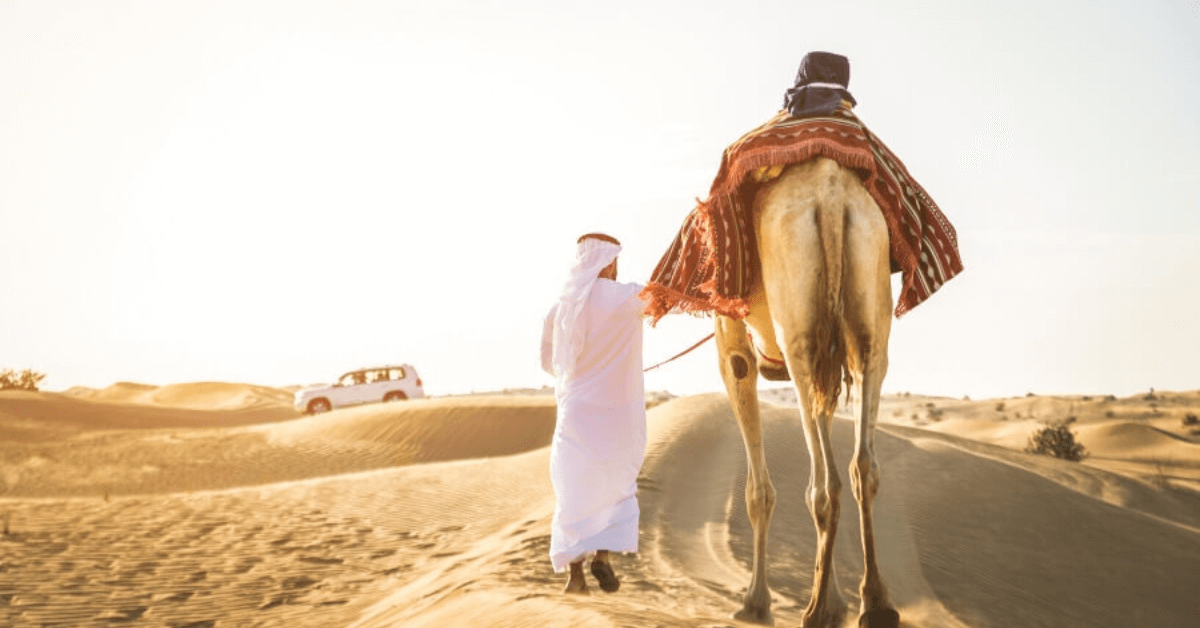Dubai is renowned for its magnificent desert safaris, offering thrilling adventures and a glimpse into the Bedouin heritage. However, one concern that may arise is the weather, particularly the possibility of rain during your desert safari experience. In this article, we will explore the impact of rain on Dubai desert safaris and provide insights into alternative activities that can be enjoyed during inclement weather.
Dubai desert safaris are popular among tourists and locals alike, providing an opportunity to immerse oneself in the mesmerizing beauty of the desert landscape. With the vast expanses of sand dunes, traditional Arabian activities, and captivating sunset views, it’s no wonder that desert safaris are a must-do for many visitors to Dubai. However, the weather conditions can significantly influence the overall experience.
Understanding Dubai Desert Safari
Before delving into the impact of rain on desert safaris, let’s briefly understand what a desert safari entails. A desert safari is a guided tour that takes you on an adventurous journey into the desert, typically in a 4×4 vehicle. It offers an array of activities such as dune bashing, camel riding, sandboarding, henna painting, falconry shows, and traditional Arabic entertainment.

The success of a desert safari largely depends on several factors, with weather being one of the critical elements that can enhance or dampen the experience.
Weather in Dubai
Dubai is located in the United Arab Emirates (UAE) and is known for its arid desert climate. Summers are scorching hot, with temperatures often soaring above 40 degrees Celsius (104 degrees Fahrenheit). Winters are more moderate, with temperatures ranging from 15 to 25 degrees Celsius (59 to 77 degrees Fahrenheit).

Rainfall in Dubai is relatively scarce, with the city receiving minimal precipitation throughout the year. The majority of rain showers occur during the winter months, typically between November and March. However, even during these months, rainfall is limited, and the chance of rain interfering with a desert safari is relatively low.
Impact of Rain on Dubai Desert Safari
While rain is a rare occurrence in Dubai, when it does happen, it can have a notable impact on desert safaris. Here are some ways in which rain can affect your desert safari experience:
Changes in Landscape
When rain graces the desert, it brings about a remarkable transformation in the landscape. The rainwater creates temporary puddles that reflect the surrounding dunes, adding a touch of magic to the scenery. In some instances, the rain triggers the blooming of desert flowers, turning the sandy terrain into a colorful oasis. These changes in the landscape offer a unique and picturesque sight, showcasing the desert’s ability to adapt and thrive in diverse conditions.
Accessibility and Transportation
During and after heavy rainfall, the desert terrain can become challenging to navigate. The sand becomes compacted, making it difficult for vehicles to traverse through the dunes. In such cases, safari operators may modify their routes or postpone tours to ensure the safety of the participants. These precautions are taken to avoid getting vehicles stuck in the sand or encountering any potential hazards due to slippery surfaces.
Activities and Experiences
Certain activities, such as dune bashing, may be affected during rainy weather due to the slippery surfaces created by the damp sand. However, many tour operators adapt to the conditions by offering alternative experiences that are equally thrilling and enjoyable. These alternatives can include activities such as quad biking, where the vehicles are better suited to handle the conditions, or guided walks through the desert to explore its unique flora and fauna. The flexibility of the safari operators ensures that visitors can still have an adventurous experience despite the weather conditions.
Safety Measures and Precautions
To ensure the safety and comfort of participants, safari operators take necessary precautions when rain is expected during a desert safari. Here are some measures that are commonly implemented:
Vehicle Modifications
The safari vehicles used during desert tours are often equipped with modifications to handle rainy conditions. These modifications include reinforced tires, improved traction, and safety features to ensure a smooth and secure ride. The vehicles are designed to navigate through various terrains, including wet and slippery surfaces while maintaining the safety of the passengers.
Professional Guidance
Experienced and trained guides accompany participants throughout the safari. Their expertise in desert navigation and weather conditions allows them to make informed decisions regarding route adjustments or itinerary changes, prioritizing safety above all else. These guides keep a close eye on the weather forecasts and communicate with the safari participants, providing updates and guidance to ensure a safe and enjoyable experience.
Proper Attire and Equipment
It is advisable to dress appropriately for the weather and wear comfortable clothing and sturdy footwear during a desert safari. In the event of rain, it is essential to have waterproof attire to protect yourself from getting wet. Additionally, participants may be provided with protective gear, such as goggles and headscarves, to shield themselves from sand and rain if necessary. It is important to follow the guidance provided by the safari operators regarding the recommended attire and equipment for specific weather conditions.
Alternative Activities during Rainy Days
While a desert safari may be impacted by rain, Dubai offers an array of alternative activities that can be enjoyed indoors or in covered areas. Here are some options to consider:
Indoor Attractions
Dubai boasts numerous indoor attractions that cater to various interests and age groups. The city is known for its world-class shopping malls, where visitors can indulge in retail therapy, savor delicious cuisine, or enjoy entertainment options such as cinemas and indoor amusement parks. The malls often house aquariums, where you can witness the mesmerizing underwater world or ice skating rinks that offer a unique experience. Additionally, Dubai is home to several museums and art galleries that showcase the region’s rich history and cultural heritage.
Cultural Experiences
Dubai’s cultural experiences extend beyond the desert safari. Visitors can immerse themselves in the vibrant heritage of the UAE by visiting traditional souks, which are bustling marketplaces offering a variety of goods, including spices, textiles, and gold. These souks provide a glimpse into the region’s trading history and offer a unique shopping experience. Furthermore, cultural performances such as traditional music, dance, and theater can be enjoyed at various venues across the city. Indulging in authentic Emirati cuisine at local restaurants is also a delightful way to experience the culture and flavors of the region.
Conclusion
While rain during a Dubai desert safari may alter the typical experience, it provides a unique opportunity to witness the desert in a different light. The changes in the landscape, accessibility modifications, and alternative activities showcase the adaptability of the safari operators and the resilience of the desert environment. With proper precautions and flexibility from safari operators, visitors can still enjoy a memorable adventure. In the event of inclement weather, Dubai offers a diverse range of alternative activities that showcase the city’s cosmopolitan charm and cultural richness.

